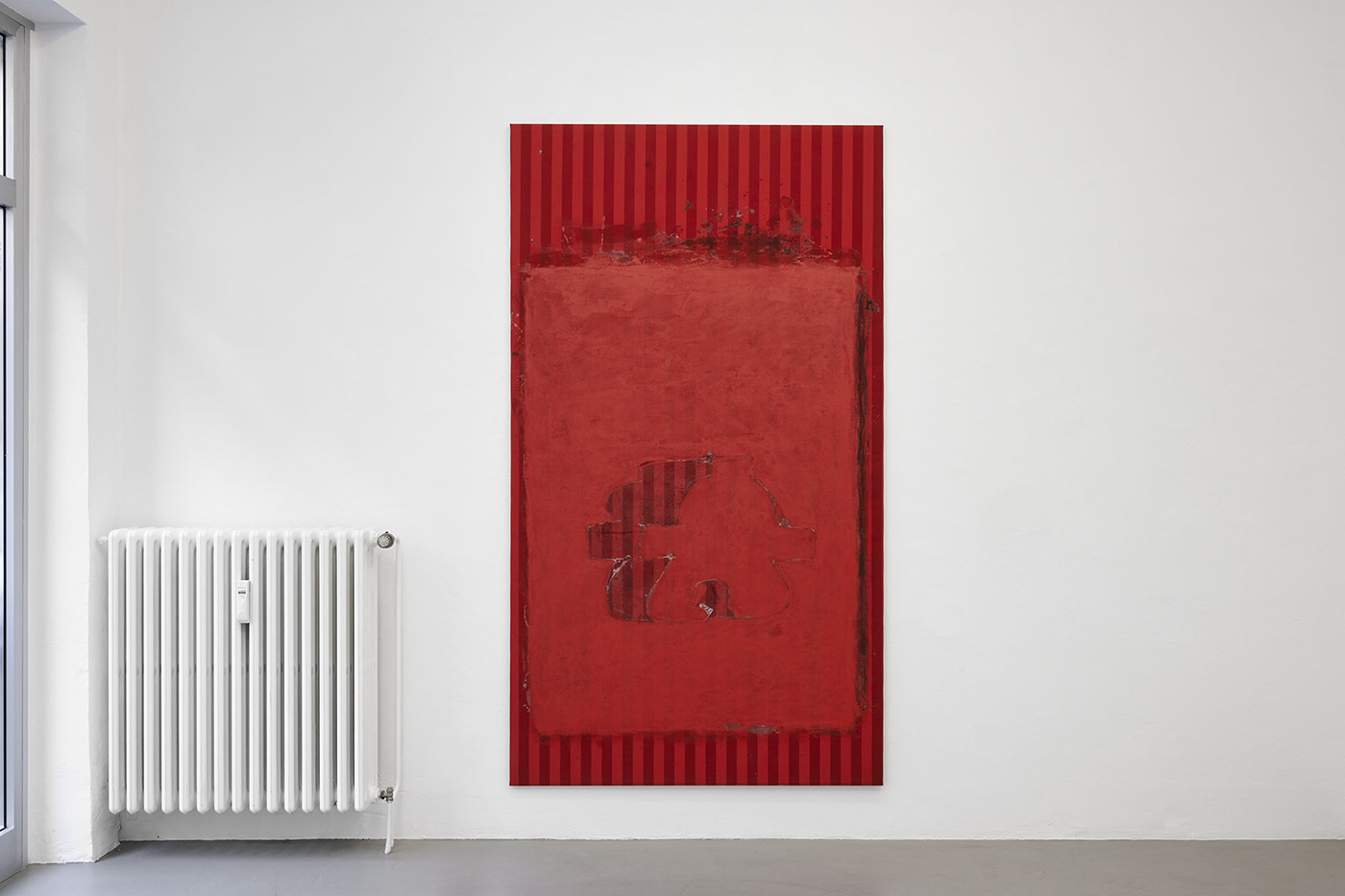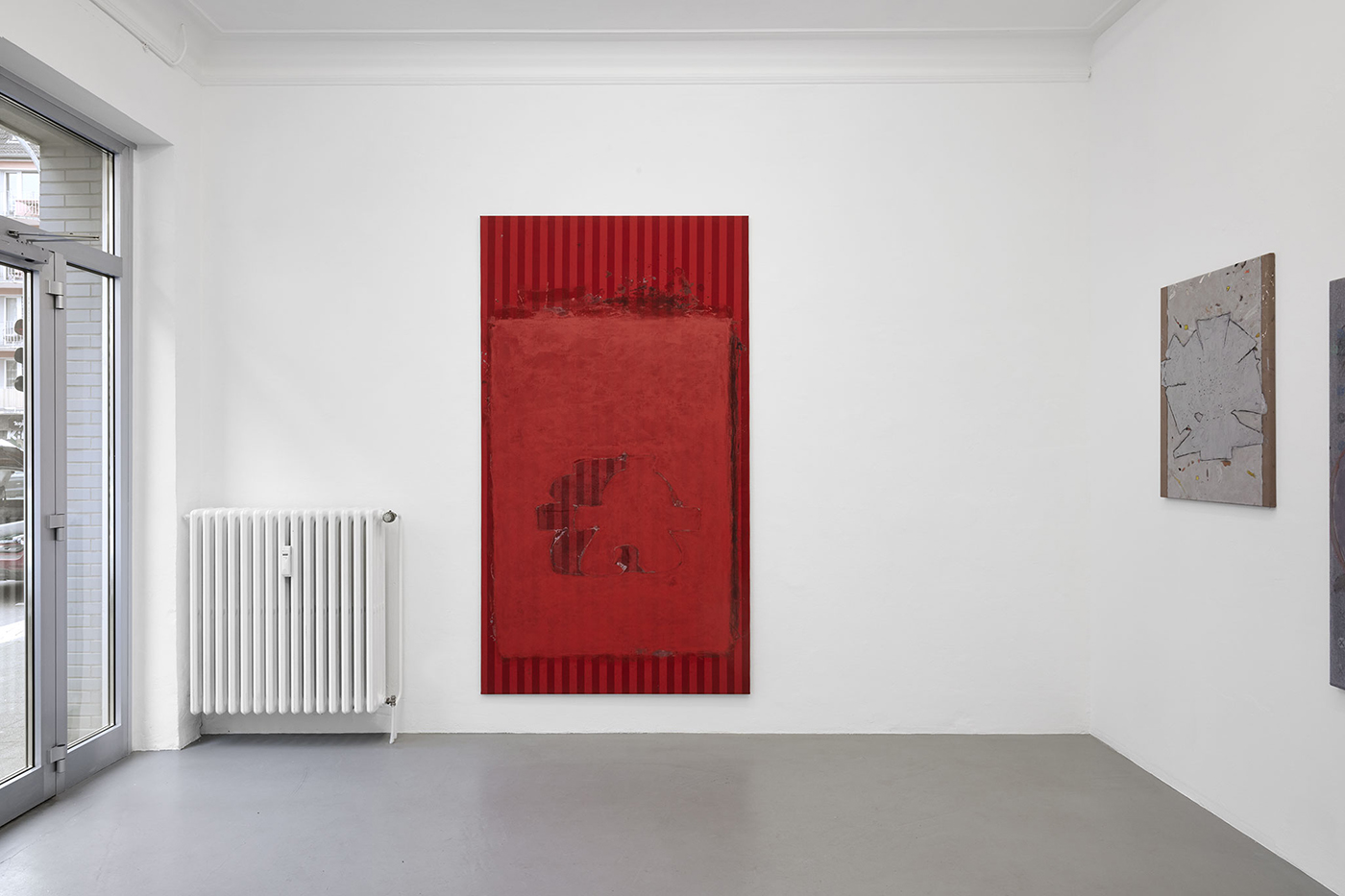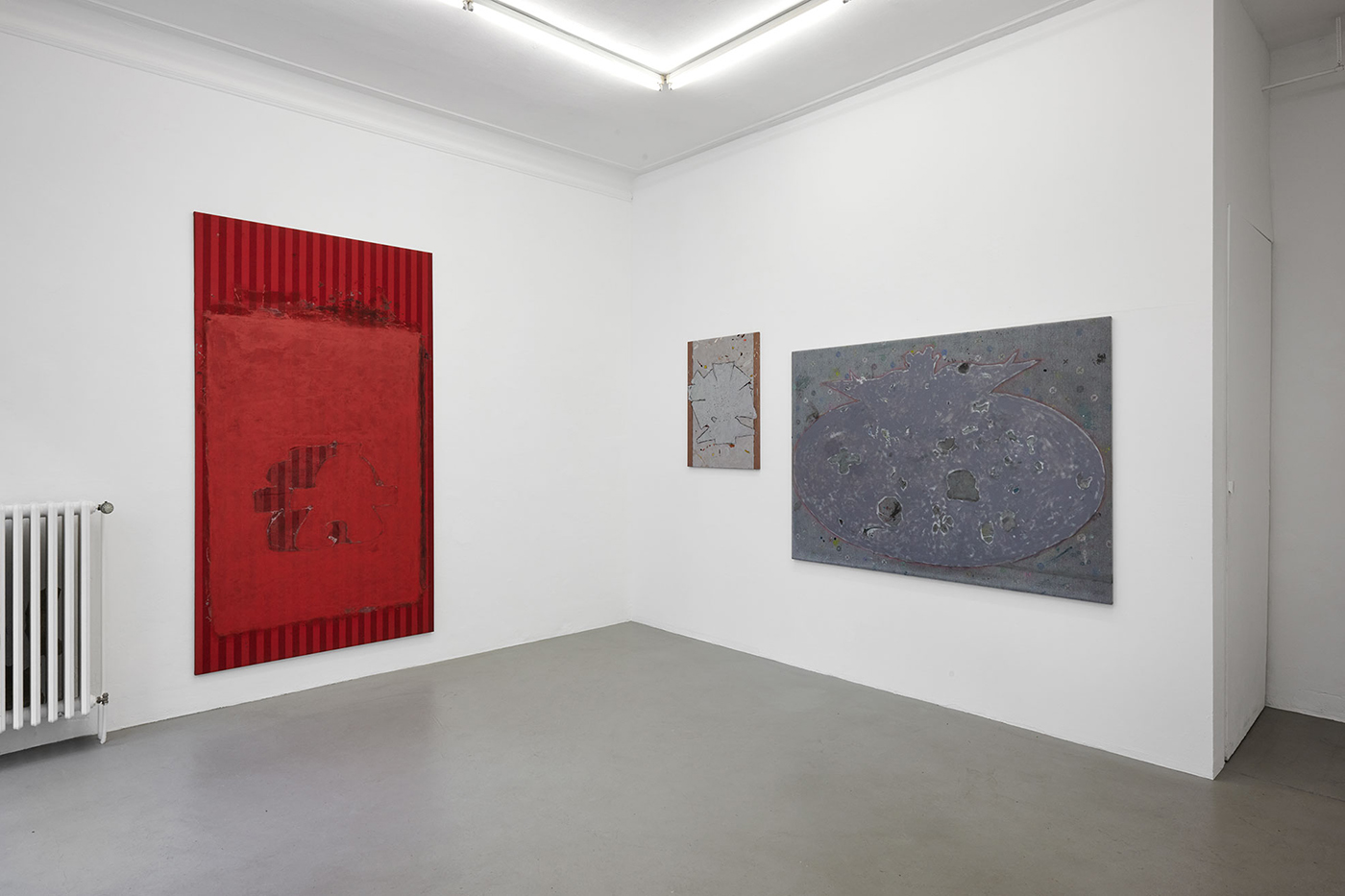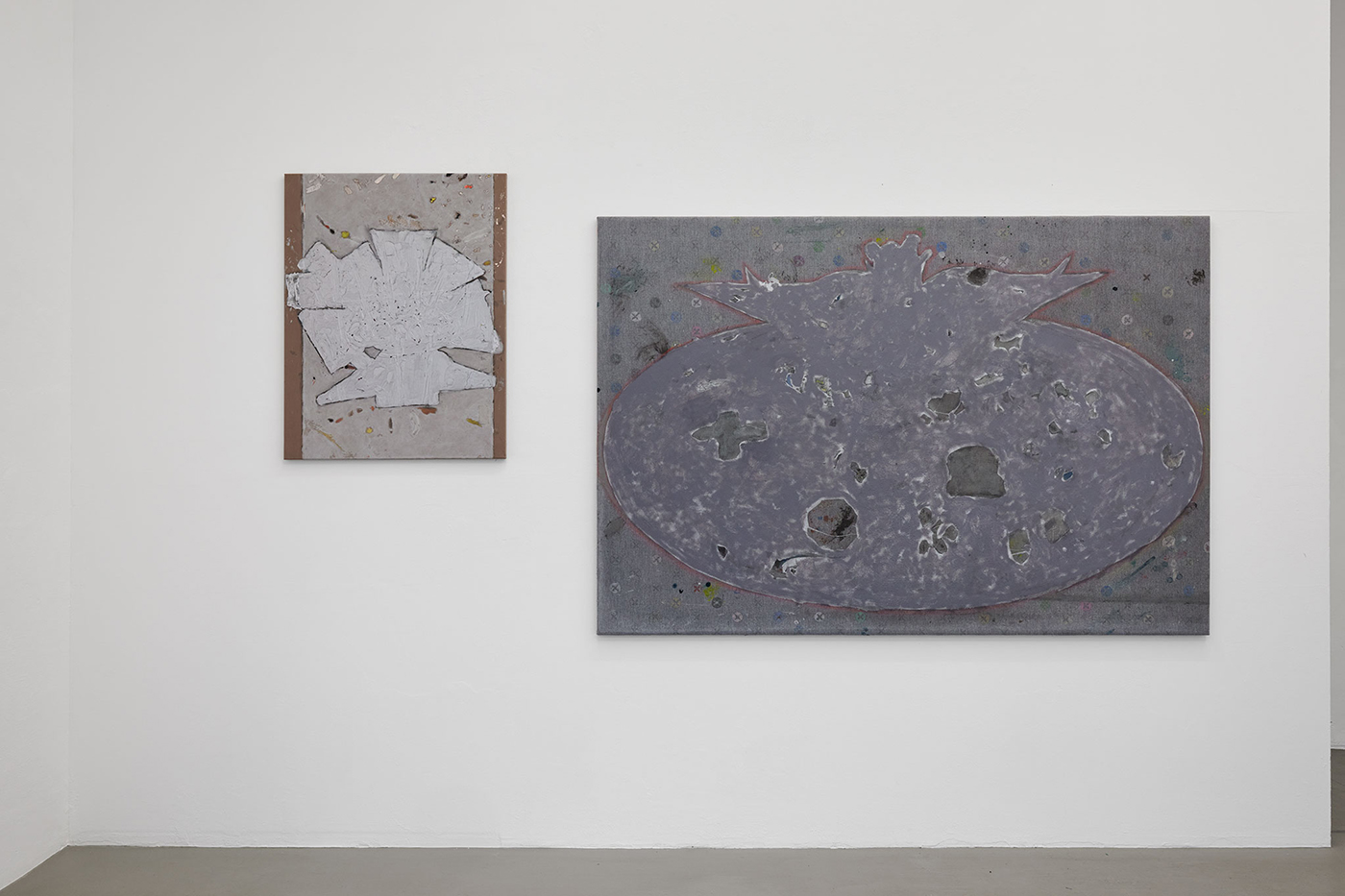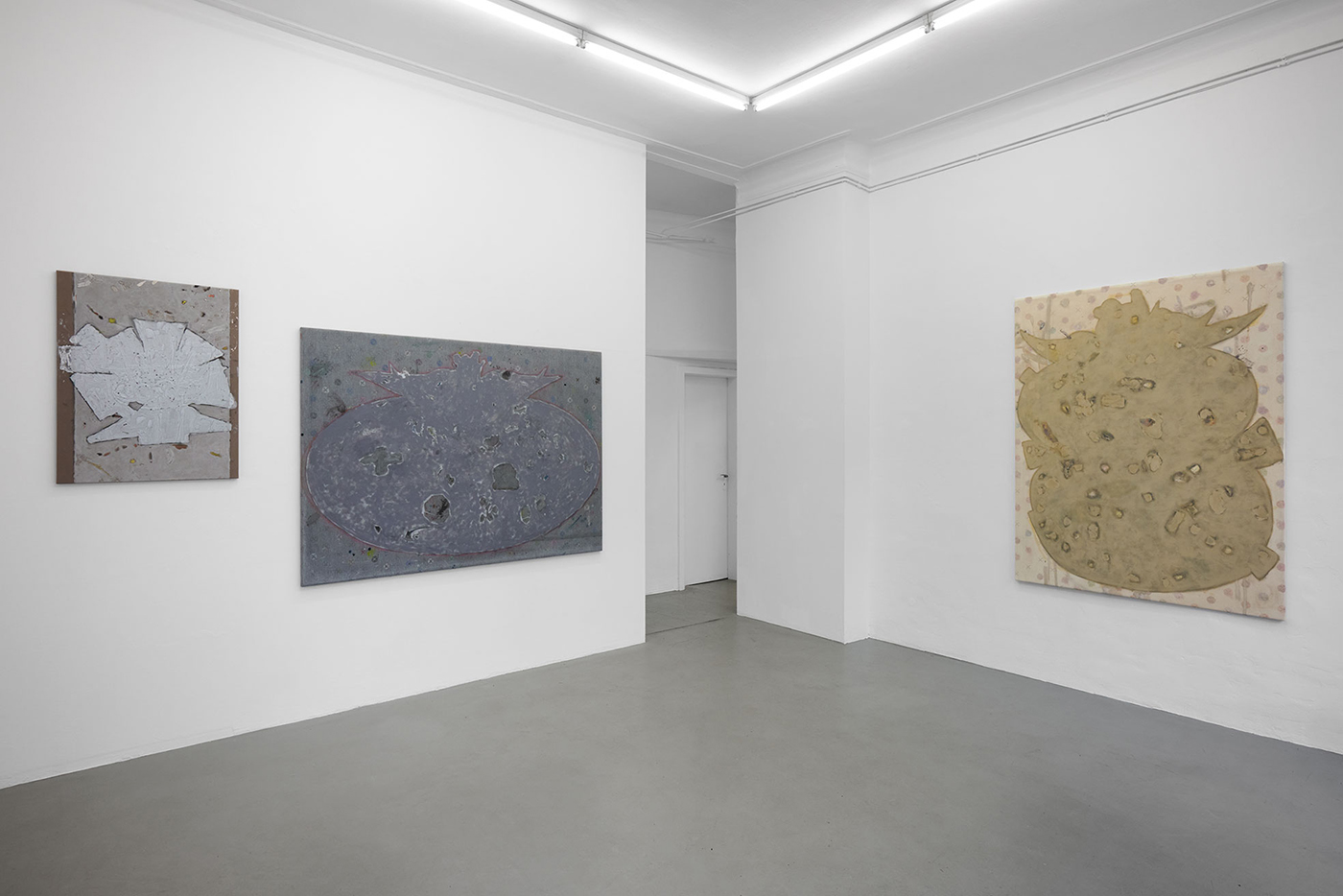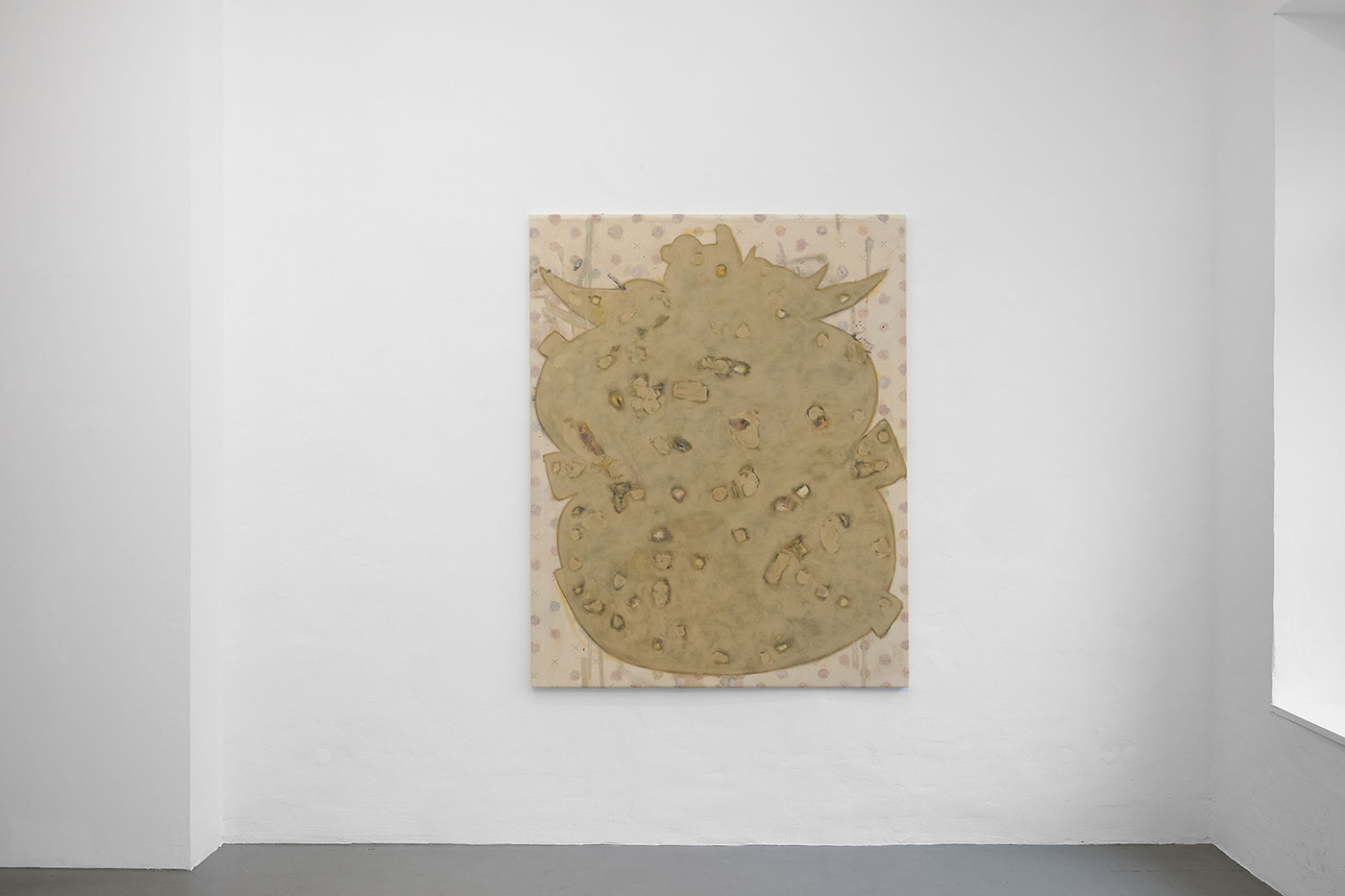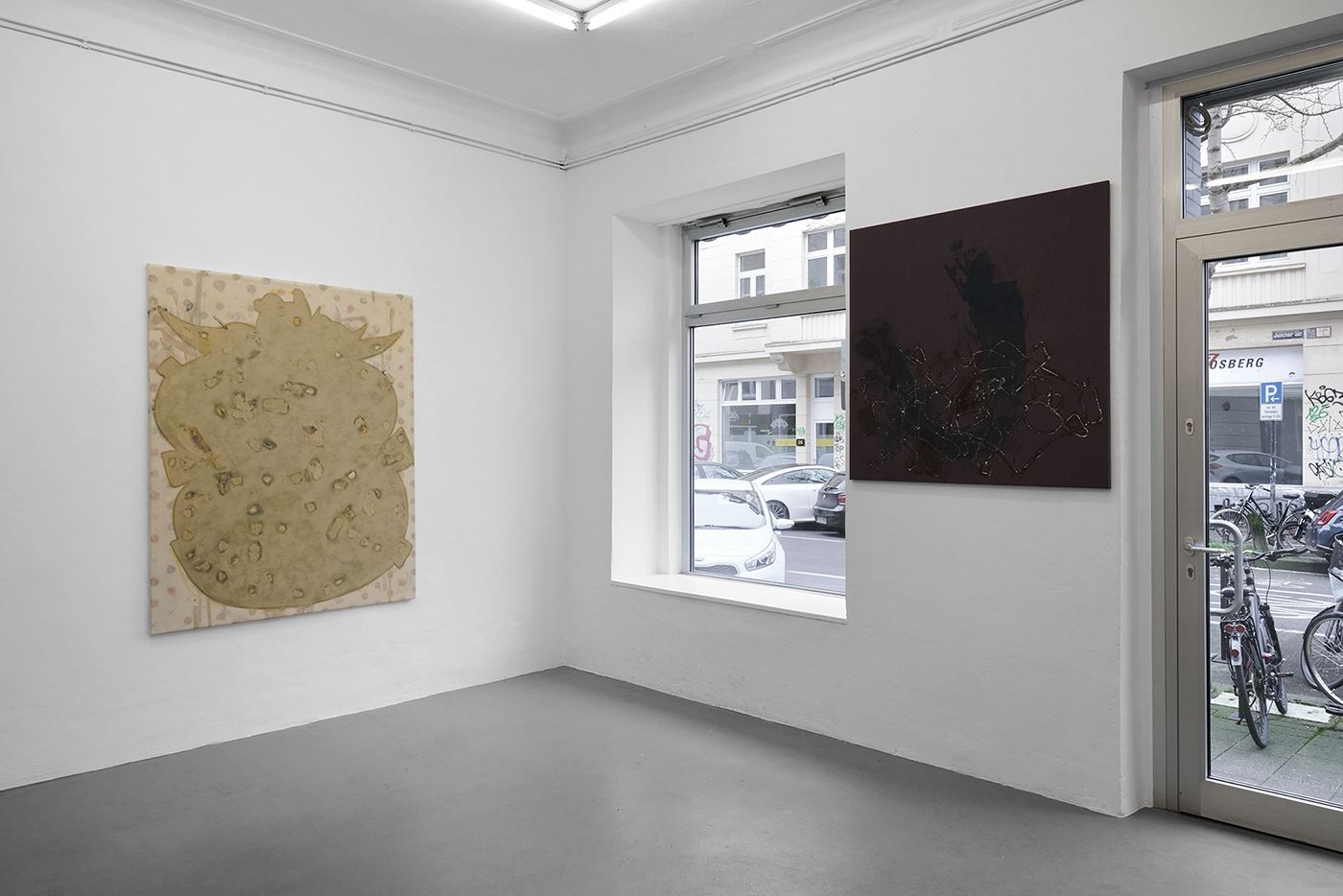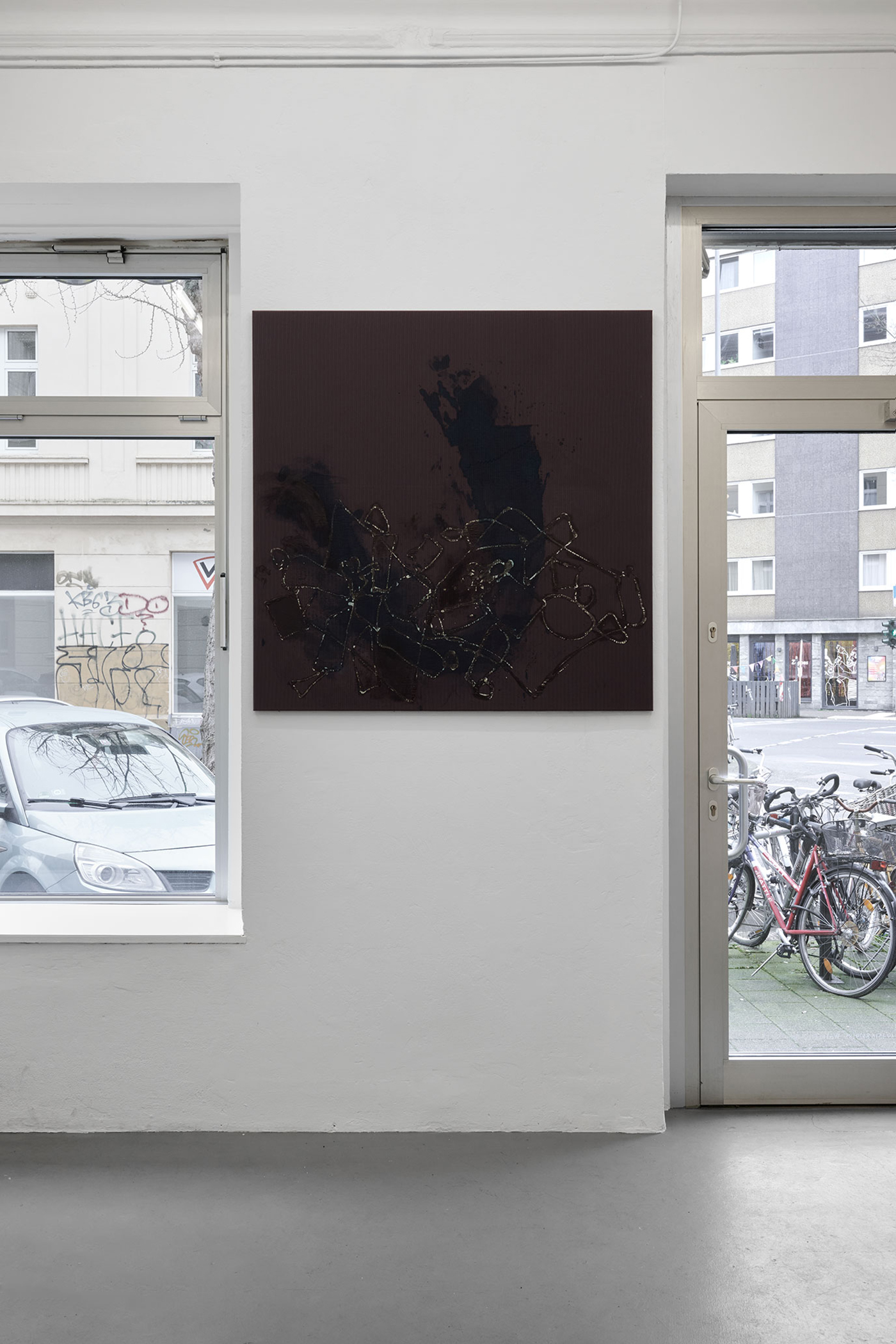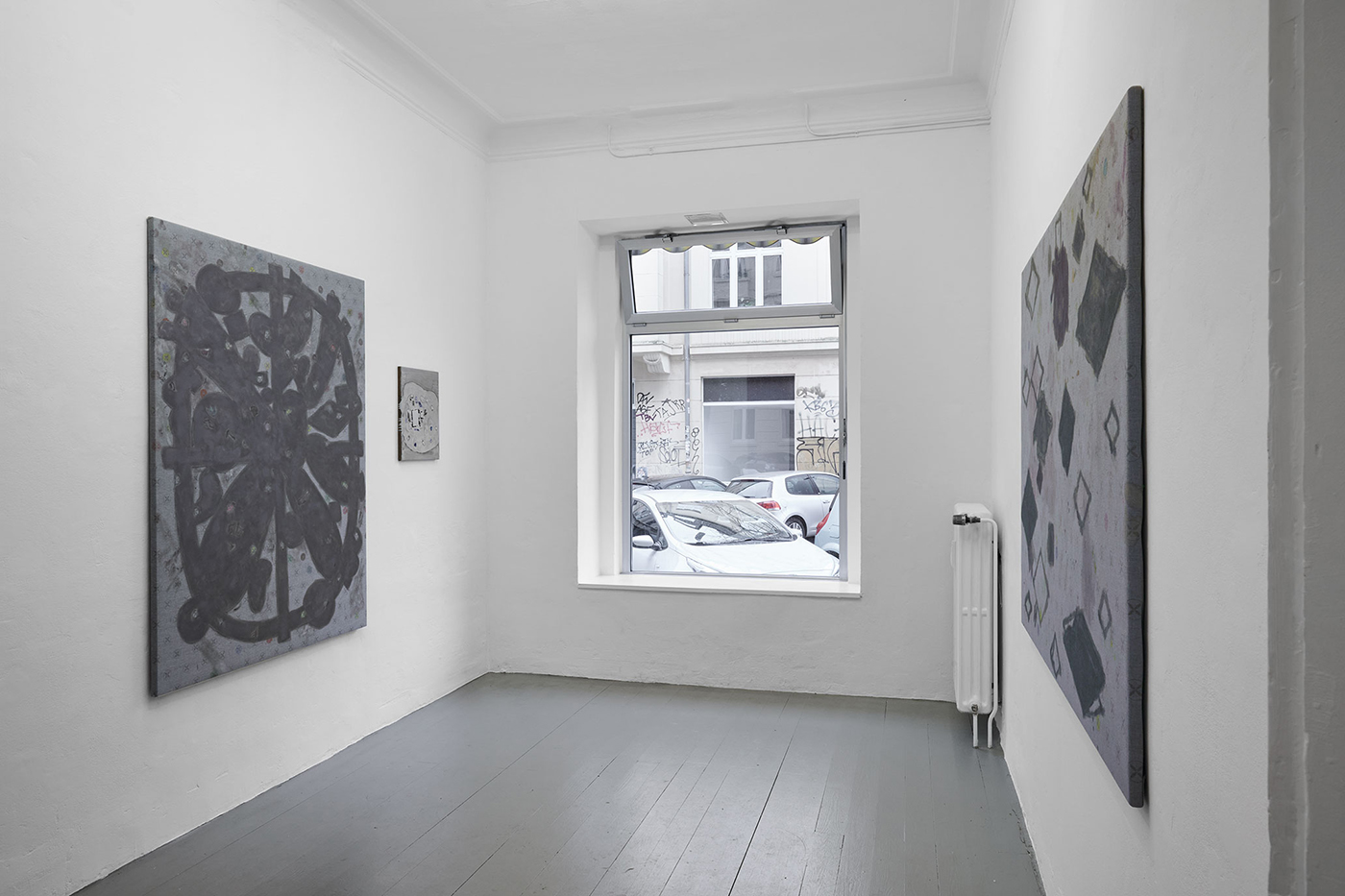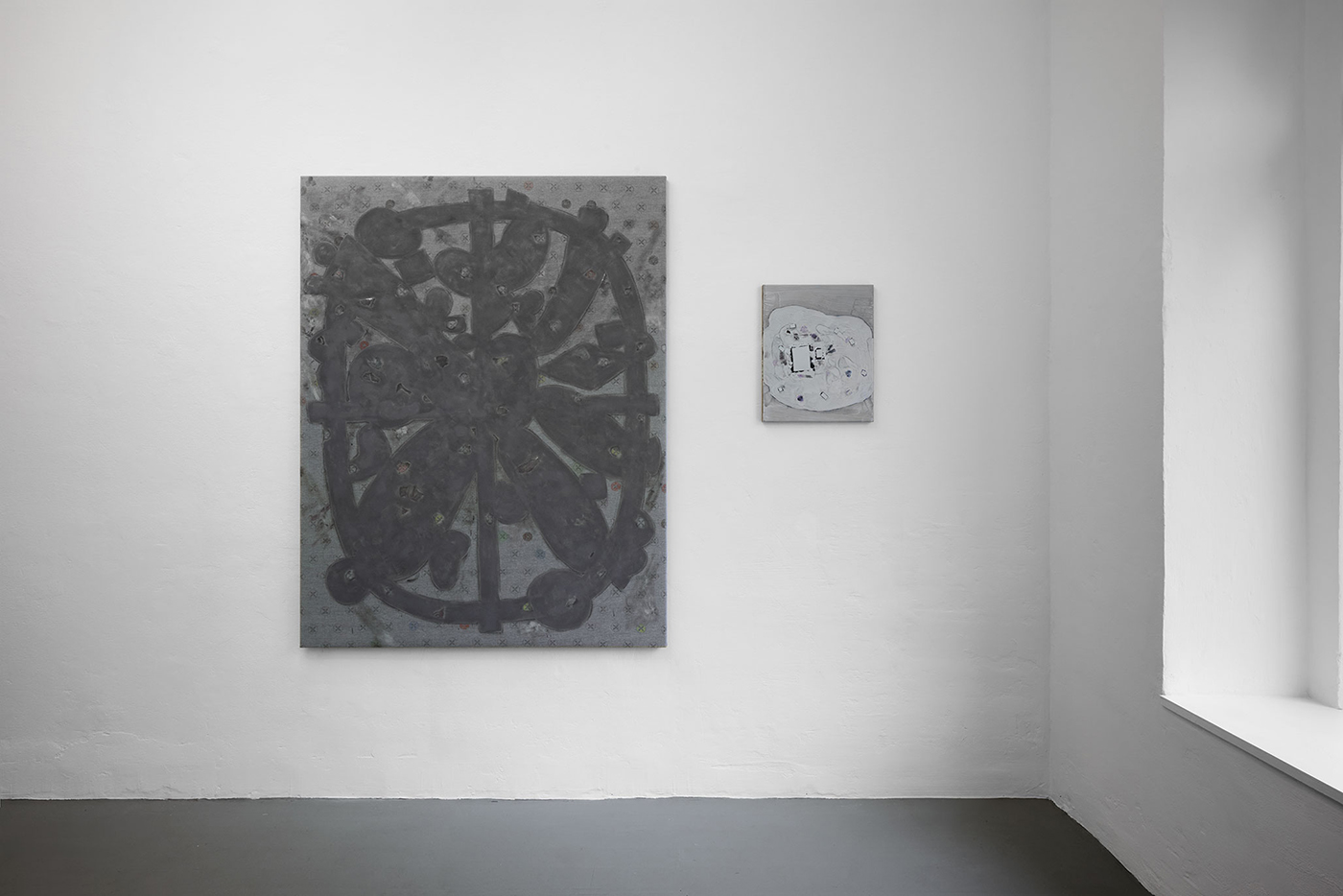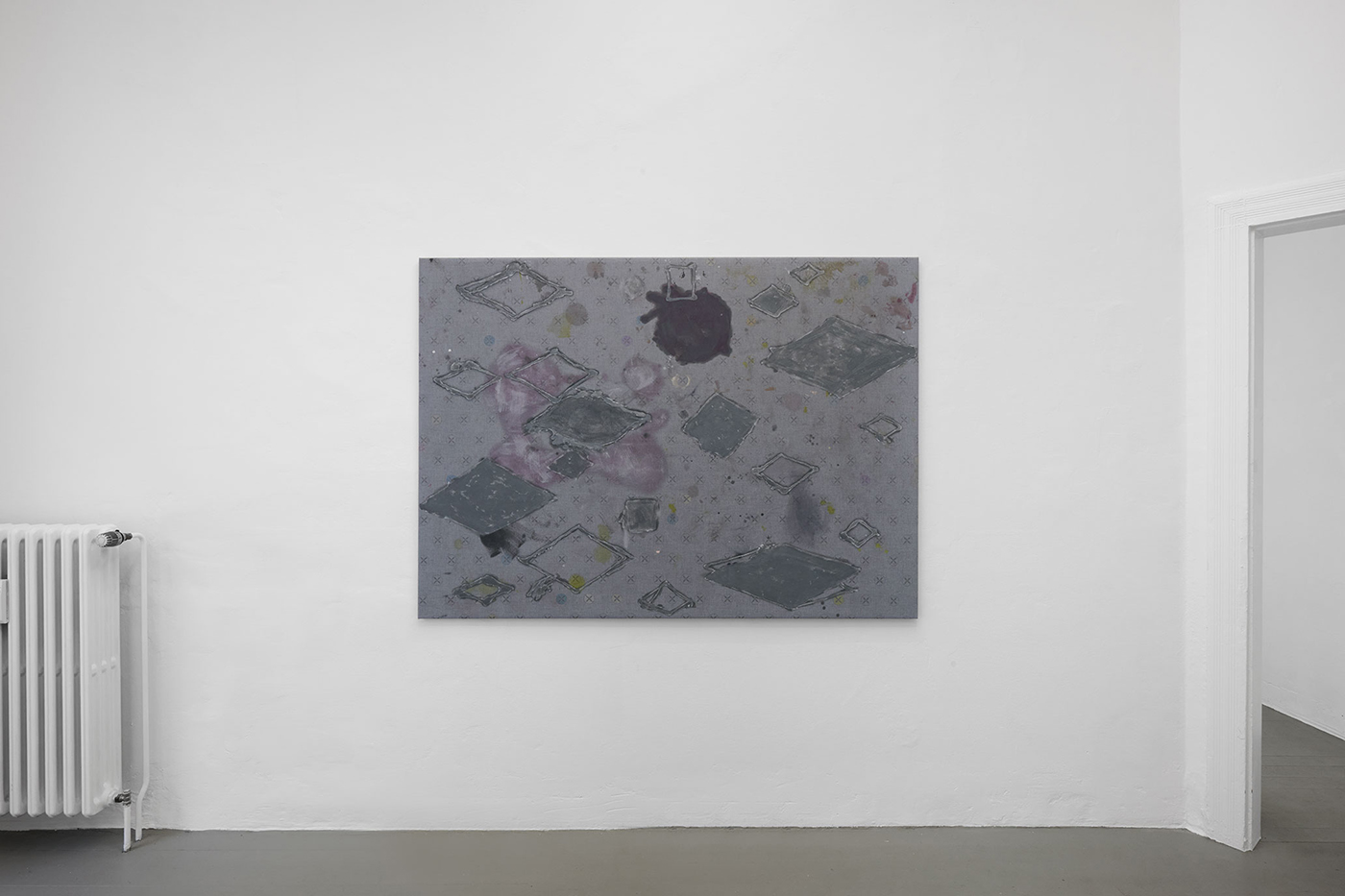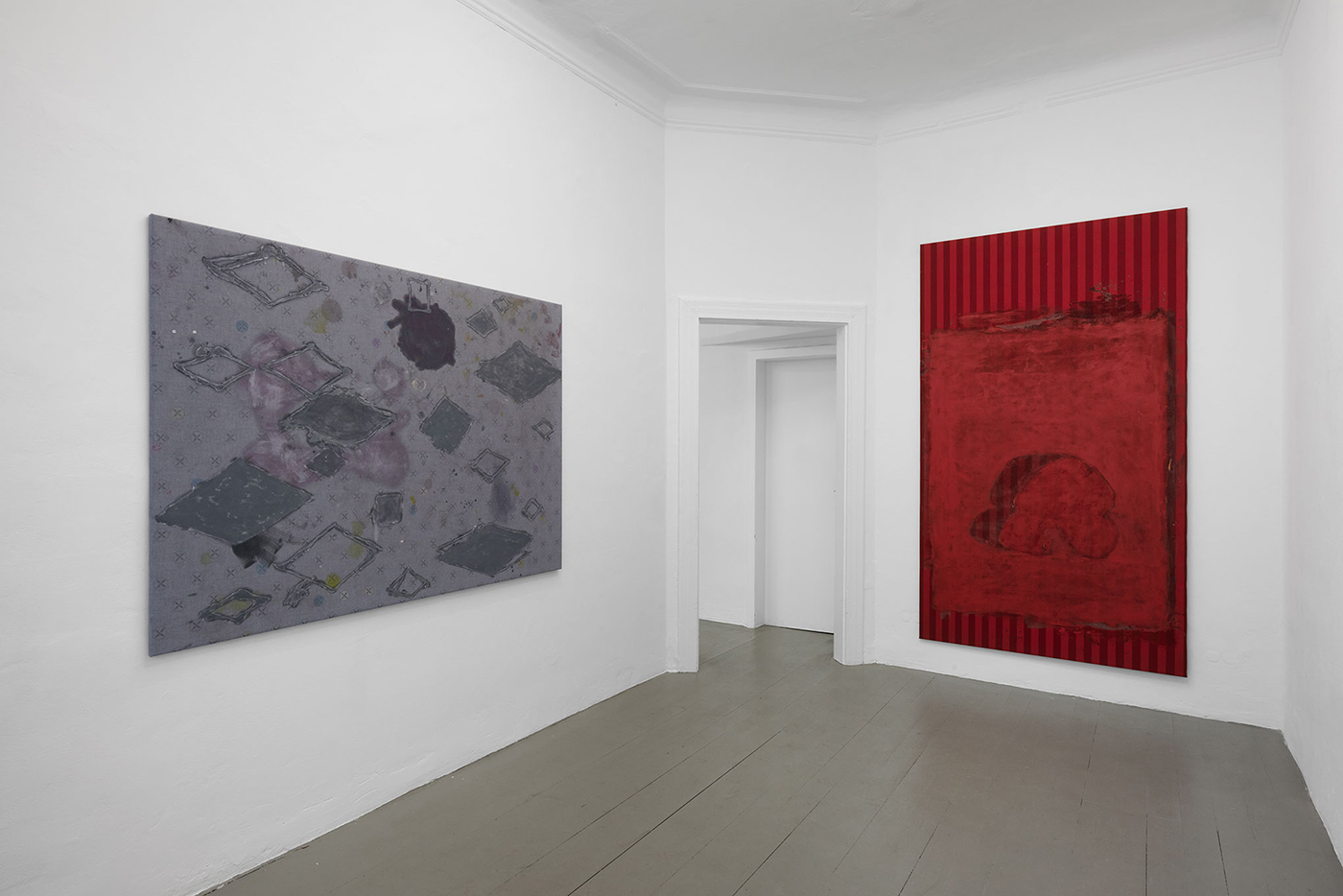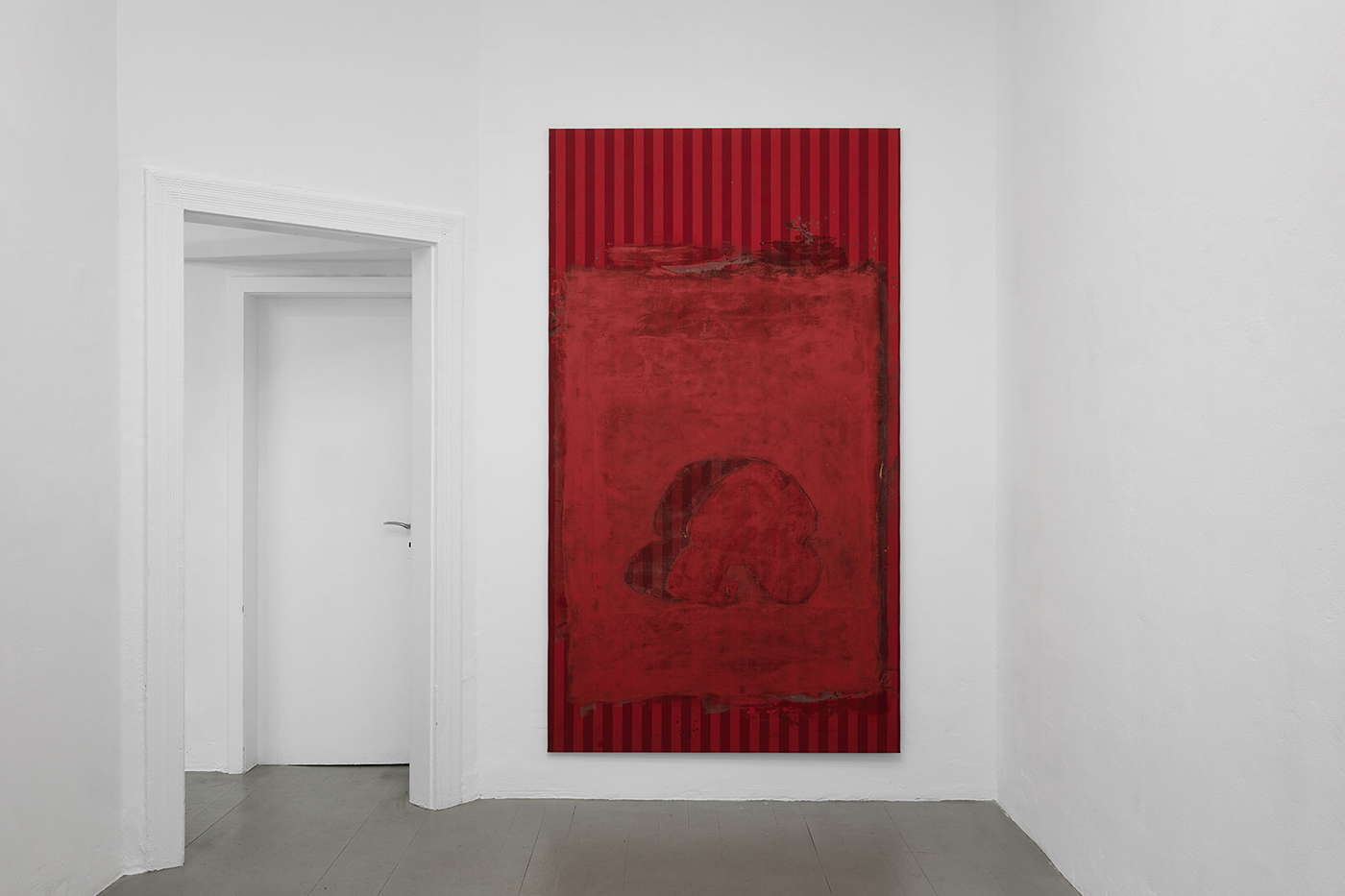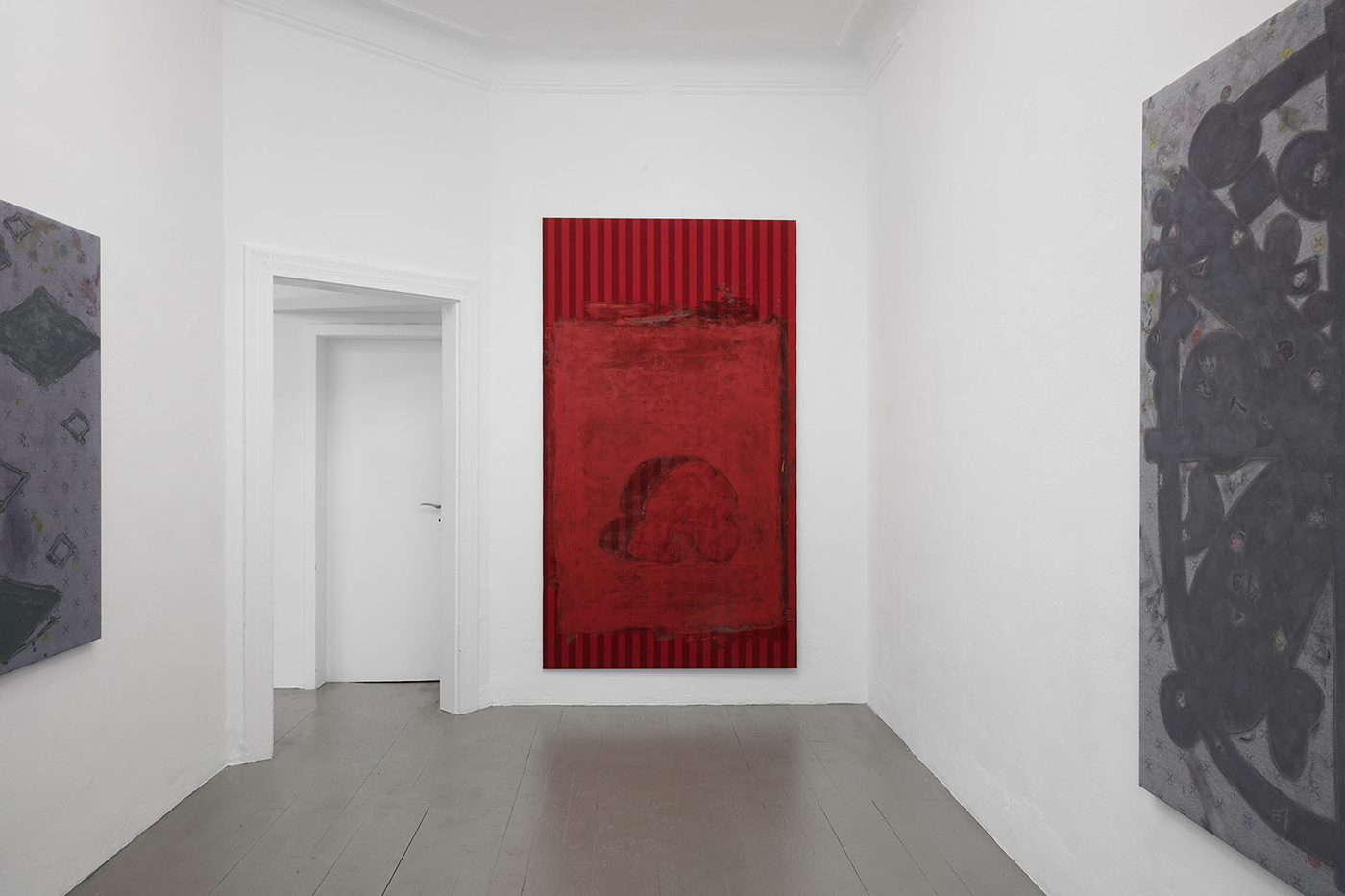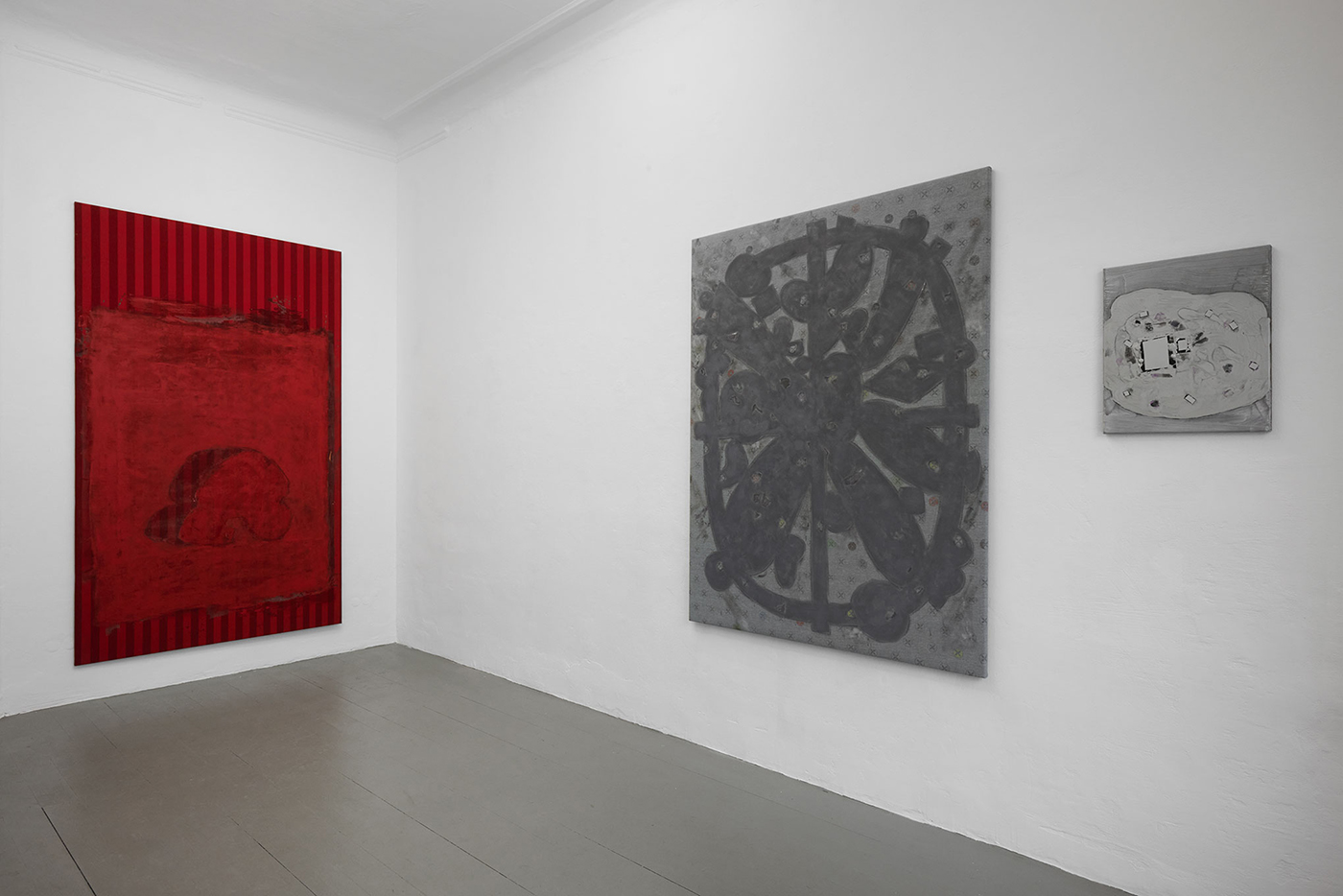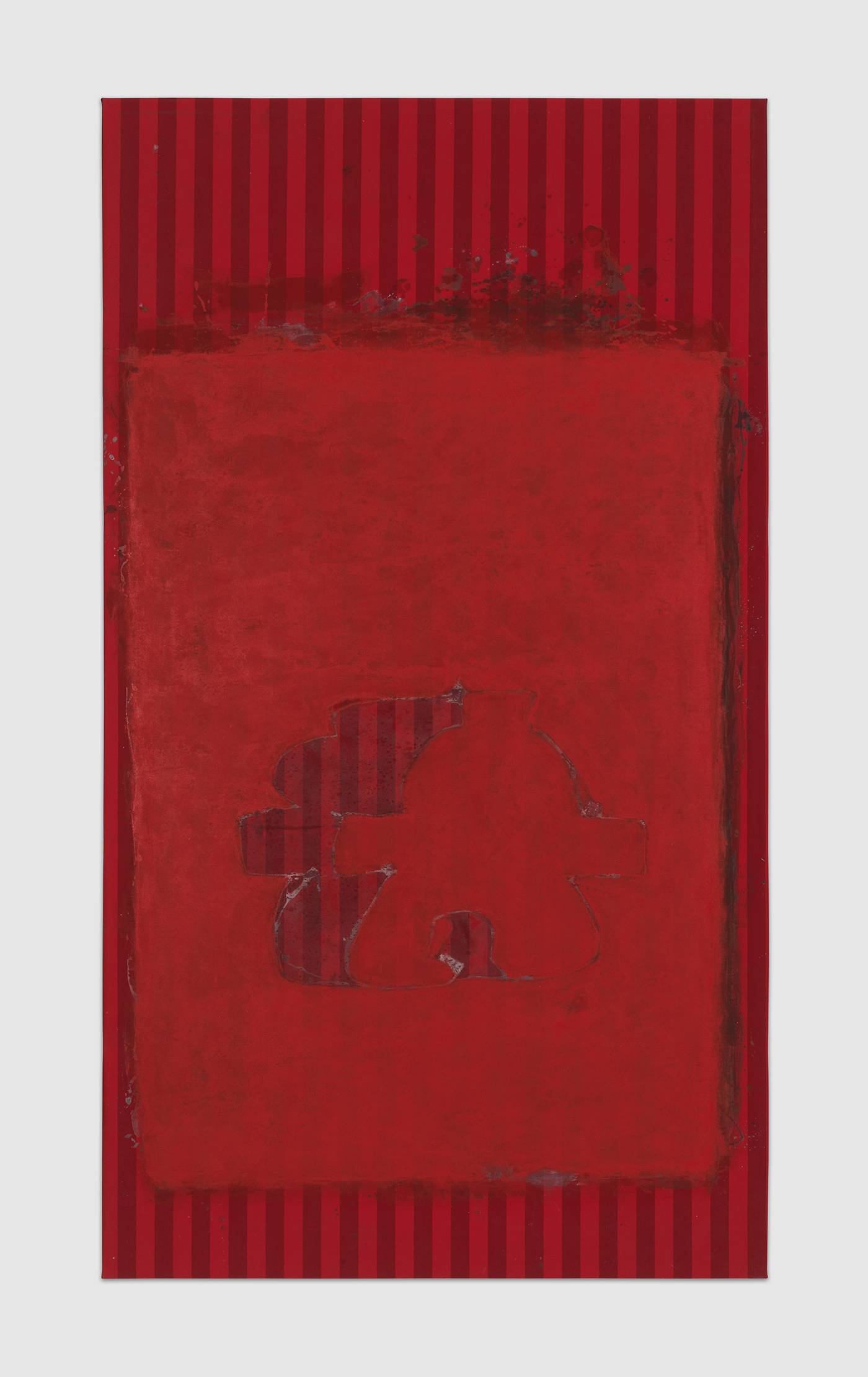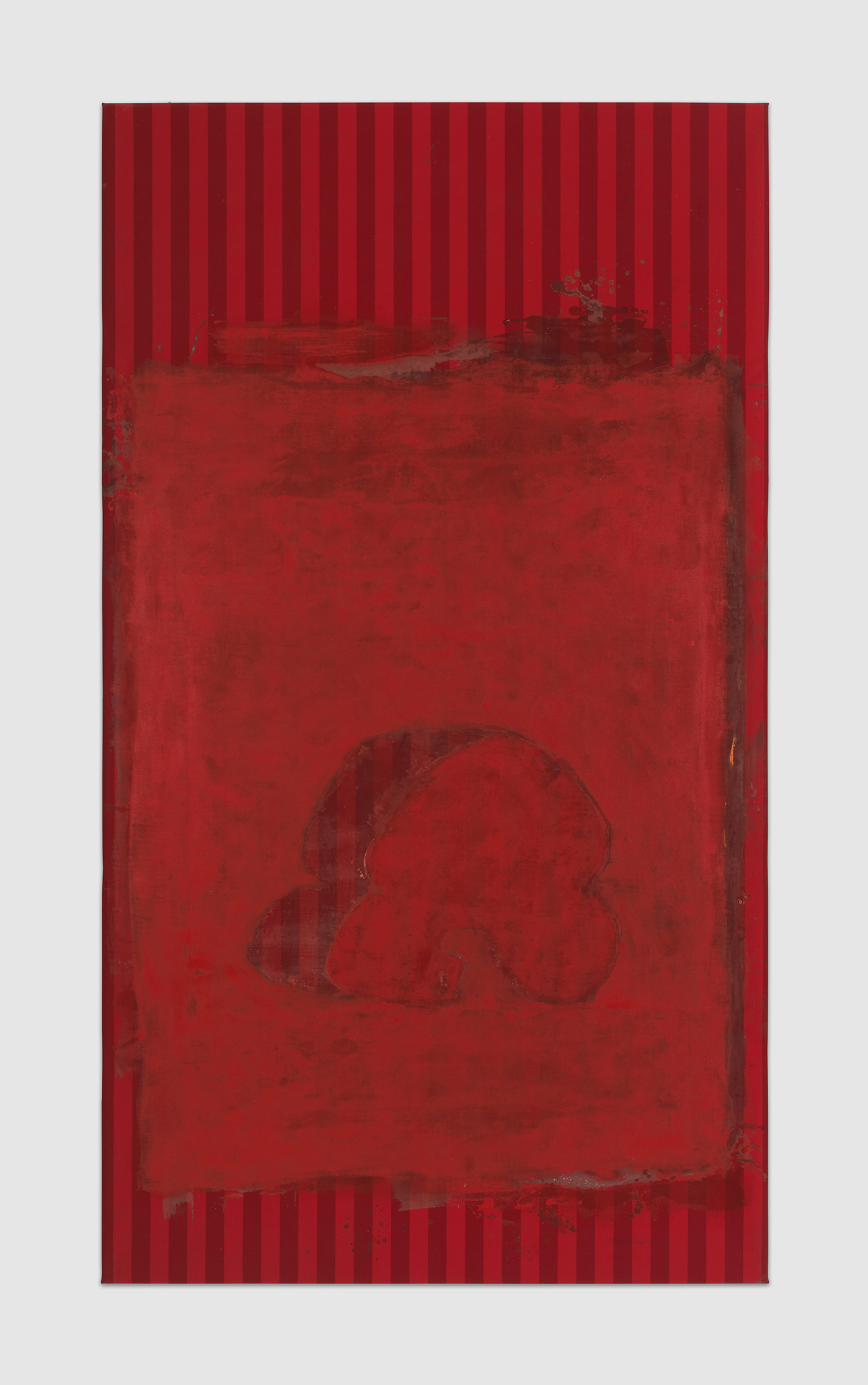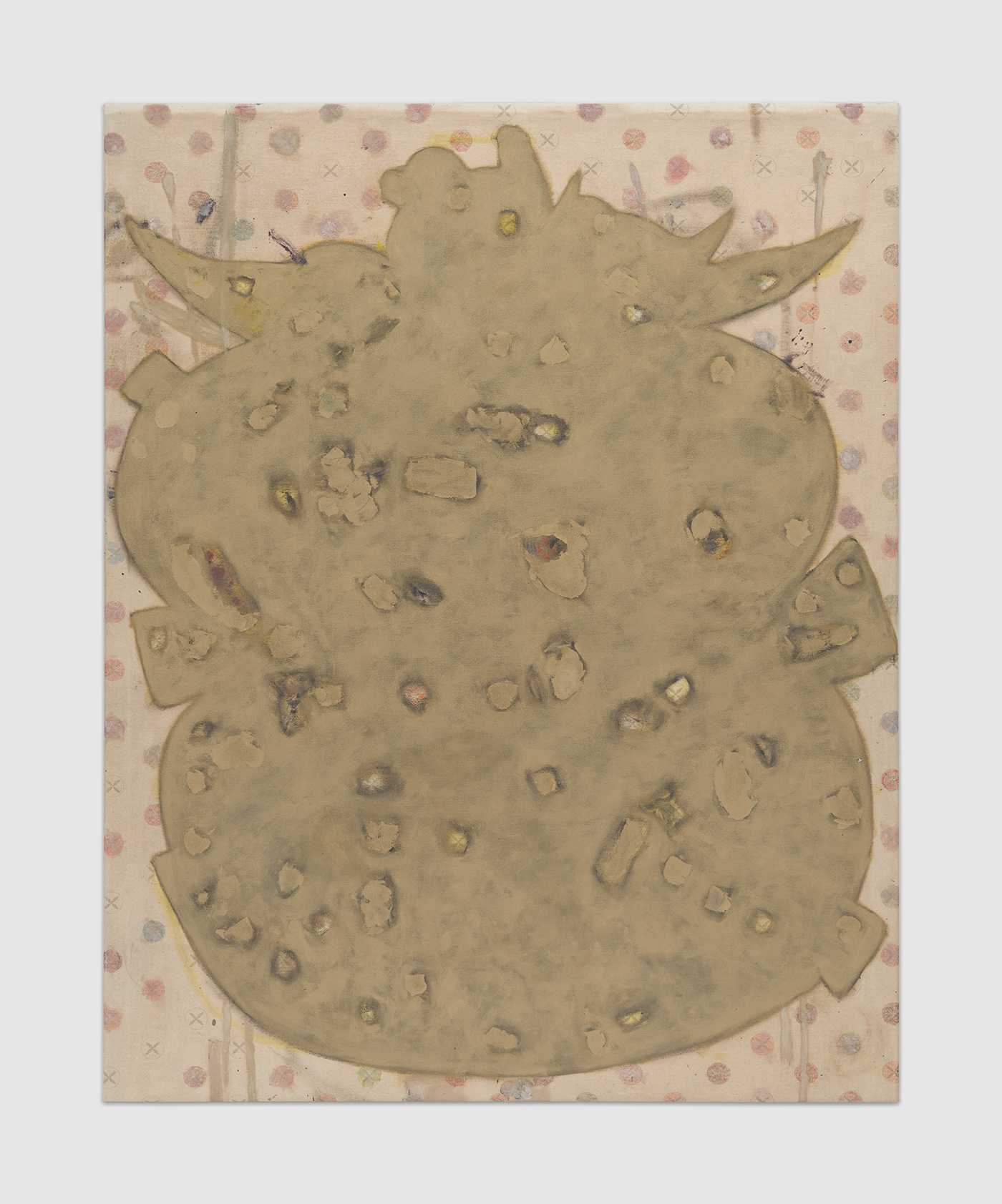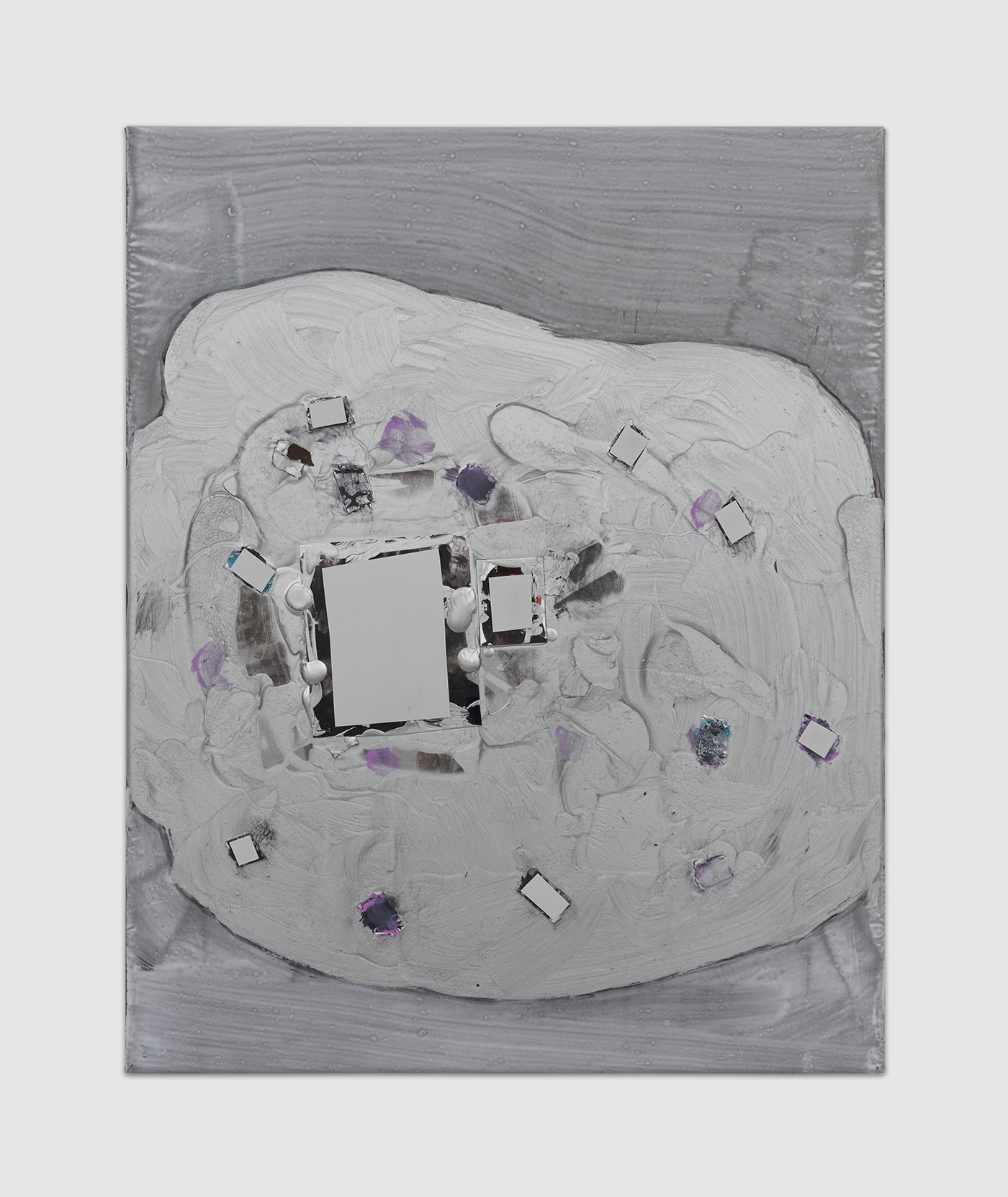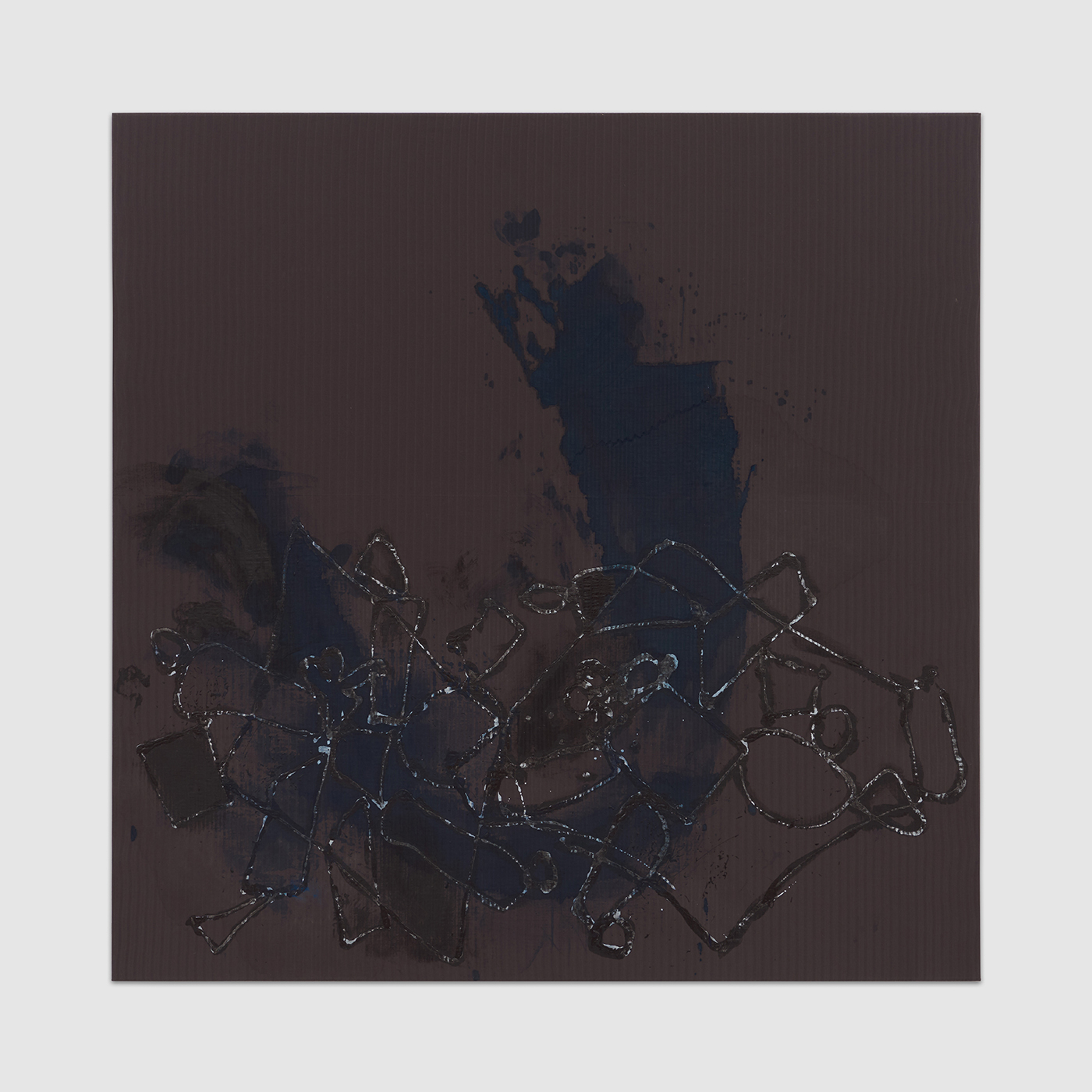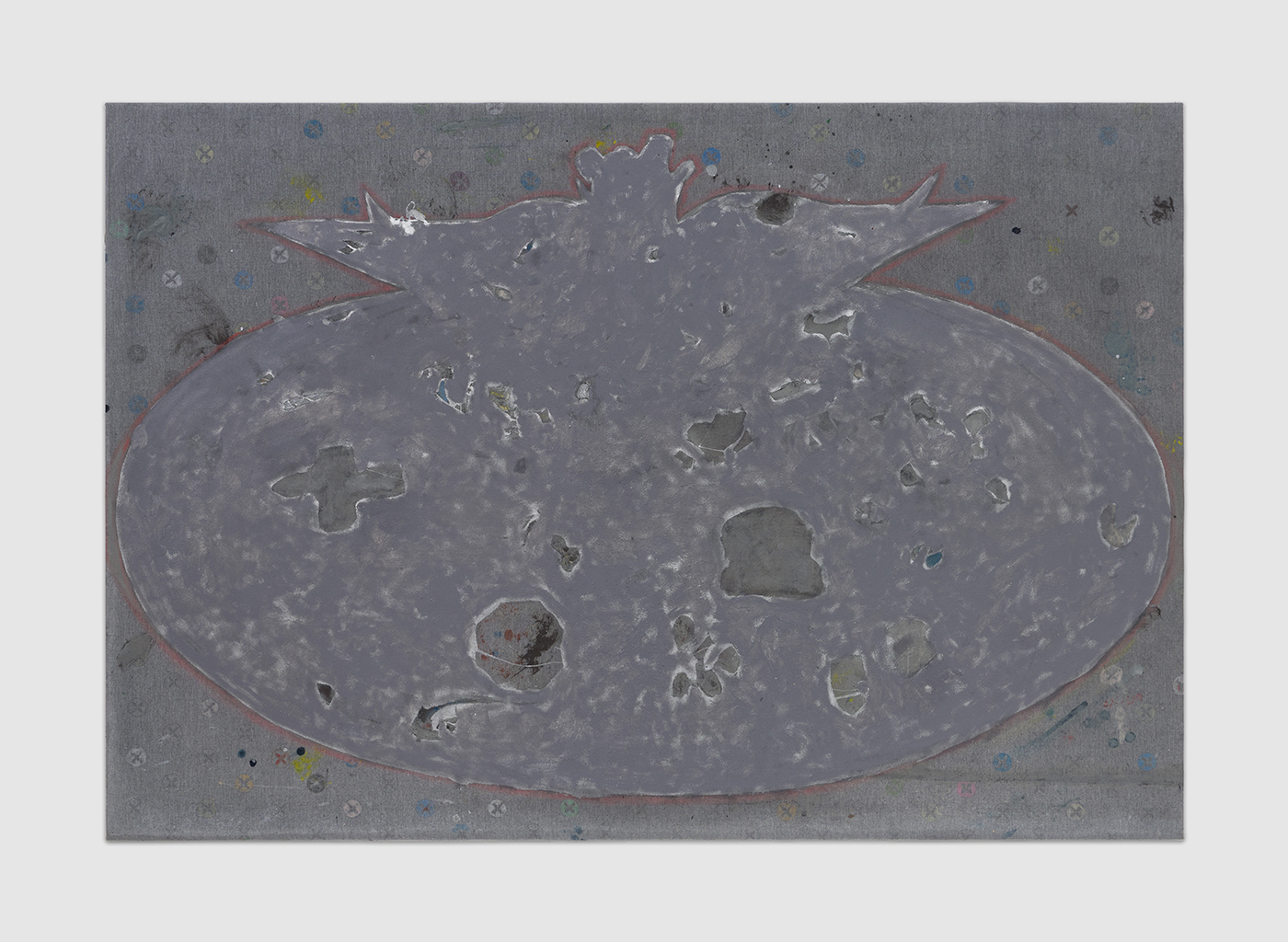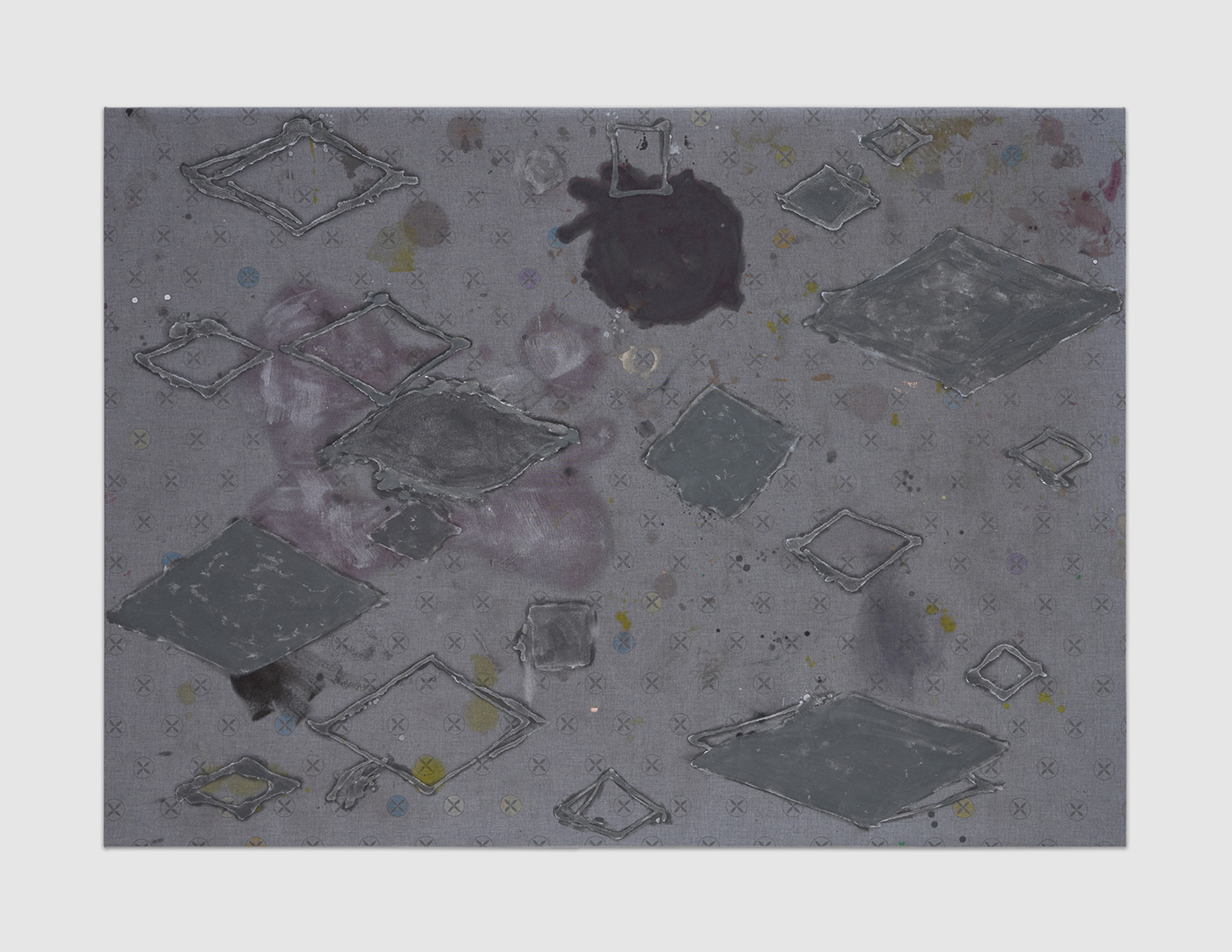Installation Views
Works
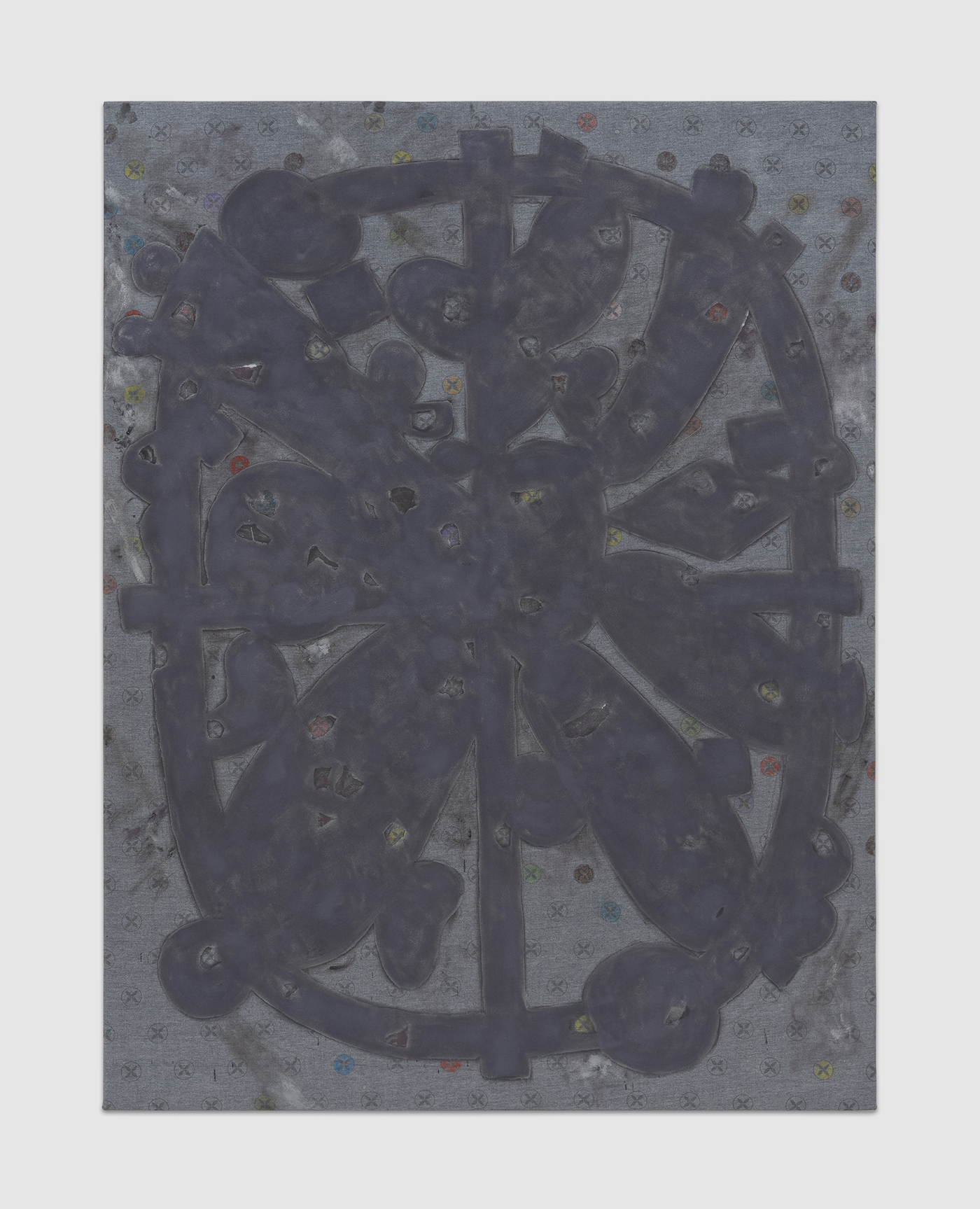
Untitled 4 (Sourdough), 2024, Acrylic, oil, color pencil, pastel, and enamel on synthetic fabric, 180 x 130 cm
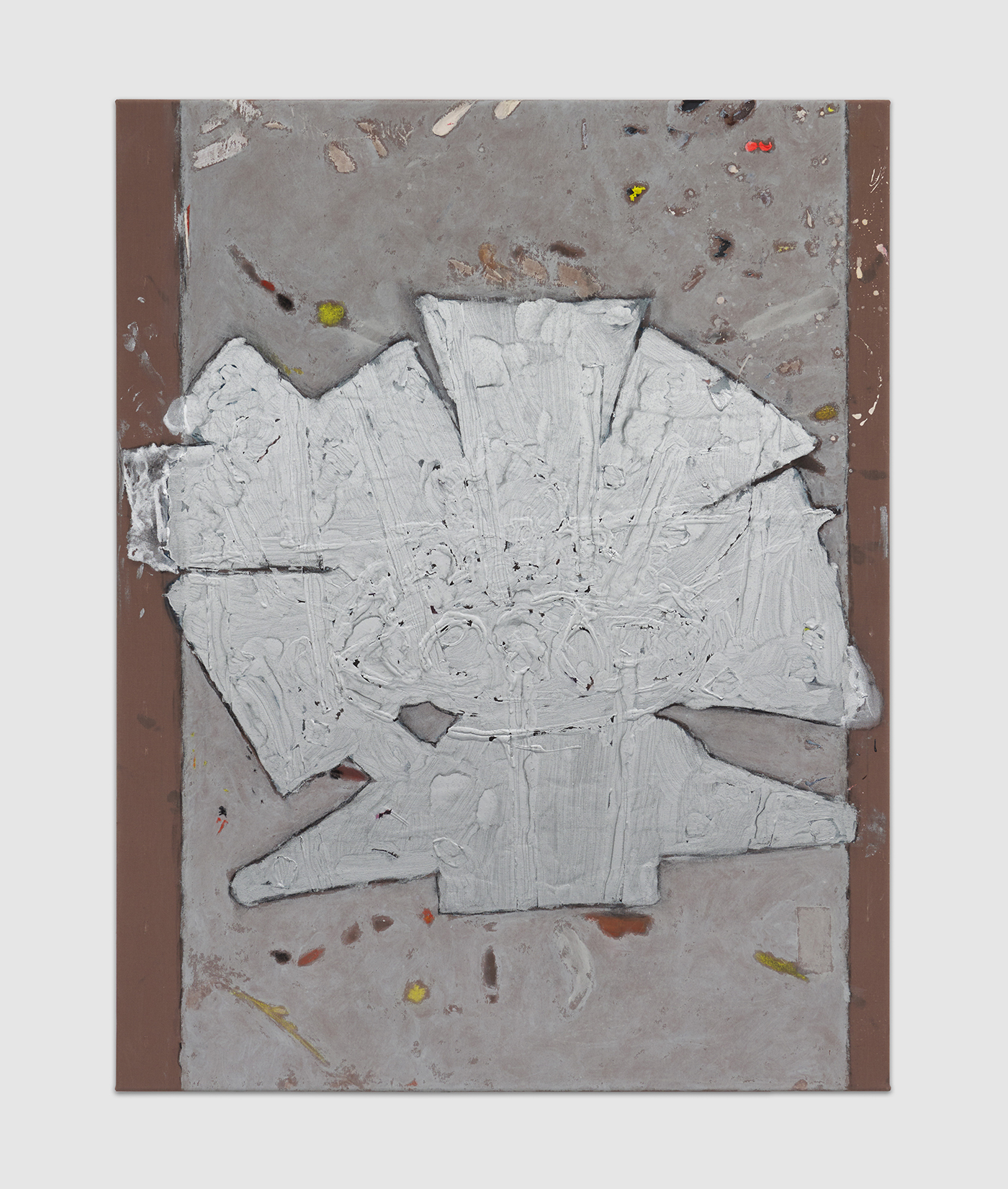
Untitled 9 (Sourdough), 2023, Acrylic, pastel, color pencil, charcoal and enamel on synthetic fabric, 90 x 70 cm
Press Release
Animal-like and botanical, amorphous and anatomical, symmetrical and off-kilter, the multiple layers of Mitchell Kehe’s works carry a protean potential that allows them to take on a variety of shapes and forms. Most are made on synthetic fabrics which often already have something going on, a significant texture, pattern, transparency, dirt, wear and tear, stains etc. What’s applied to these fabrics includes traditional mediums like acrylic and oil paint but also high gloss metal enamel, flocking, PVA glue, tape and occasionally small objects. With layers upon layers varying in texture, thickness and opacity, these works hold much more than is revealed in a customary head-on examination of a flat image. The physical presence of the object seems to carry more importance than a typical reading of the content of the image.
The surfaces, often stretched and unstretched repeatedly, carrying signs of wear and tear, are what embeds those compositions in the world in a different way: not only as objects but as its elements. They feel less like floating images in the vacuum of a gallery space and more like objects extruded through a life, carrying a multitude of identities while dodging any single reading.
Seldom bearing titles and frequently shifting shapes, still, Kehe’s works are no riddles. They also carry a healthy load of humor and playfulness. Take some of the titles of his exhibitions: ‘All the World’s Organs’, ‘Who’s the Best at Believing’, ‘The Difference Between Building and Growth,’ and now, ‘Sourdough’. Kehe’s works can be seen as organisms: brought into the world and let loose to roam it. And as organisms that are essentially alien, they can only be observed, much less understood. An attempt at getting to the bottom of their existence as images, or at creating a viable taxonomy of those organisms is, as the joke has it, “like explaining Norway to a dog”. They are a celebration of the essence of abstraction and an exercise in engaging in the unknown.
There is, however, something unsettling, if not ominous, to confronting those nameless entities. Brought into existence using mass-produced, non-organic – yet for the most part widely-available – materials, they are both familiar and anomalous. A stirring reminder that we have perhaps all but lost the confidence, and the comfort, of knowing what constitutes the basic fabric of our reality.
–––
Tierähnlich und botanisch, amorph und anatomisch, symmetrisch und schräg – die vielschichtigen Werke von Mitchell Kehe haben ein proteisches Potenzial, das es ihnen erlaubt, eine Vielzahl von Formen und Gestalten anzunehmen. Die meisten Arbeiten sind auf synthetischen Stoffen entstanden, die oft schon etwas aufweisen, eine signifikante Textur, ein Muster, Transparenz, Schmutz, Abnutzung, Flecken usw. Auf diese Stoffe werden traditionelle Medien wie Acryl- und Ölfarbe, aber auch hochglänzende Metalllacke, Beflockung, PVA-Kleber, Klebeband und gelegentlich kleine Objekte aufgetragen. Mit Schichten über Schichten, die in Textur, Dicke und Deckkraft variieren, enthalten diese Arbeiten viel mehr, als bei der üblichen frontalen Betrachtung eines flachen Bildes sichtbar wird. Die physische Präsenz des Objekts scheint von größerer Bedeutung zu sein als eine typische Lesart des Bildinhalts.
Die Oberflächen, die oft wiederholt gedehnt und gelockert werden und Gebrauchsspuren aufweisen, sind es, die diese Kompositionen auf eine andere Weise in die Welt einbetten: nicht nur als Objekte, sondern als deren Elemente. Sie fühlen sich weniger wie schwebende Bilder im Vakuum eines Galerieraums an, sondern eher wie Objekte, die durch ein Leben extrudiert wurden und eine Vielzahl von Identitäten tragen, während sie sich jeder einzelnen Lesart entziehen.
Selten mit Titeln versehen und mit häufig wechselnden Formen, sind Kehe’s Werke dennoch keine Rätsel. Sie tragen auch eine gesunde Portion Humor und Verspieltheit in sich. Nehmen Sie einige der Titel seiner Ausstellungen: All the World’s Organs”, “Who’s the Best at Believing”, “The Difference Between Building and Growth” und jetzt “Sourdough”. Kehe’s Arbeiten können als Organismen gesehen werden: in die Welt gebracht und auf sie losgelassen, um sie zu durchstreifen. Und als Organismen, die im Grunde fremd sind, können sie nur beobachtet, geschweige denn verstanden werden. Der Versuch, ihrer Existenz als Bilder auf den Grund zu gehen oder eine brauchbare Taxonomie dieser Organismen zu erstellen, ist, wie es im Witz heißt, “wie einem Hund Norwegen zu erklären”. Sie sind eine Feier des Wesens der Abstraktion und eine Übung darin, sich auf das Unbekannte einzulassen.
Die Konfrontation mit diesen namenlosen Gebilden hat jedoch etwas Beunruhigendes, wenn nicht gar Bedrohliches an sich. Da sie aus massenproduzierten, nicht organischen, aber größtenteils weit verbreiteten Materialien hergestellt wurden, sind sie zugleich vertraut und anomal. Eine aufrüttelnde Erinnerung daran, dass wir vielleicht das Vertrauen und den Komfort verloren haben, zu wissen, was die Grundstruktur unserer Realität ausmacht.
